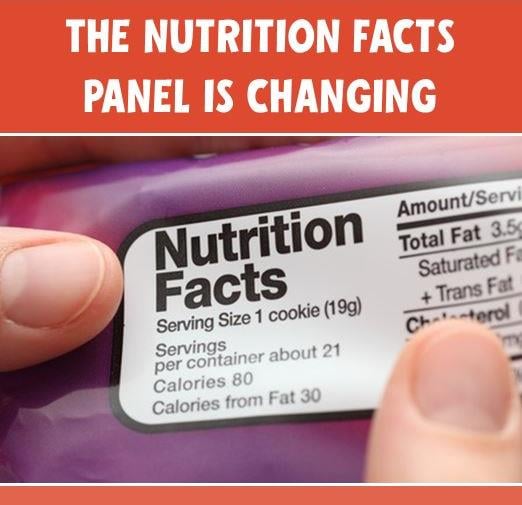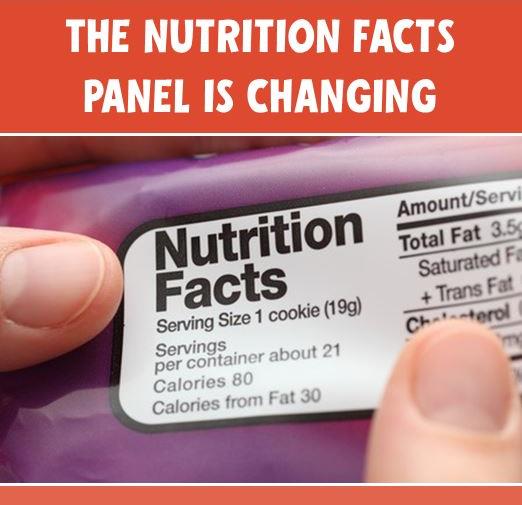 This past month the FDA finalized their much-anticipated changes to the nutrition facts panel. It is the first time we have seen major changes (other than listing trans fats) in the nutrition facts panel since it was first enacted through the Nutrition Labeling and Education Act of 1990 and formally introduced in 1993. The new changes harmonize the nutrition facts panel with the most recent 2015-2020 Dietary Guidelines for Americans which reflect the most current thinking on healthy eating patterns to prevent disease.
This past month the FDA finalized their much-anticipated changes to the nutrition facts panel. It is the first time we have seen major changes (other than listing trans fats) in the nutrition facts panel since it was first enacted through the Nutrition Labeling and Education Act of 1990 and formally introduced in 1993. The new changes harmonize the nutrition facts panel with the most recent 2015-2020 Dietary Guidelines for Americans which reflect the most current thinking on healthy eating patterns to prevent disease.
Having the Guidelines and the nutrition facts panel aligned is a really big step in helping American consumers make healthier food choices. As a dietitian, I applaud these changes as they support consumer empowerment through knowledge.
Here are the major changes you can expect:
- There will be a greater emphasis on the calories of a product as well as the serving size, and servings per container. This will be done by increasing the font size and bolding the calorie information.
- “Calories from Fat” will also be removed because the type of fat is more important than the amount of calories from fat.
- Serving sizes will be updated to reflect the amounts that people are actually eating as opposed to what they should eat. The serving sizes on labels haven’t changed in over 20 years, while our plates and appetite certainly have. Updated serving sizes will provide greater transparency about how much you are really consuming. For certain multi-serving packages that can easily be consumed at one time (think of that pint of ice cream), nutrition information will either be provided for both a serving and the entire container or just for the entire amount in the container based on how many servings the package provides. Either way, you’ll have an idea as to how much is in a package.
- The % daily values (%DVs) for certain nutrients including sodium, fiber, and potassium, will be updated to be consistent with the Dietary Guidelines for Americans. These are included on the label to help consumers understand how each nutrient should fit in relation to their entire daily diet.
- Added sugars will be included on the label. This means that instead of just listing the amount of sugars in the product — which can include sugars from healthy sources such as fruit or dairy — the amount of sugars from added sweeteners such as molasses, high fructose corn syrup, or sugar will be called out. The Dietary Guidelines for Americans suggests that less than 10% of your calories should be coming from added sugars. This is about 45 grams of added sugars in a 1,800 calorie diet and 50 grams in a 2,000 calorie diet.
- The micronutrients listed at the bottom of the nutrition facts panel will now only include Vitamin D, Calcium, Iron, and Potassium. This is because data shows that Americans are not consuming enough of these nutrients which play particular importance in bone health and cardiovascular health.
You can expect to see the new nutrition facts panel within the next two to three years. Most companies will be required to migrate to the new nutrition facts panel by the end of July 2018, while some smaller companies are given an additional year to comply.
What do you think about these new changes? Weigh in below in the comments.
Read other posts related to nutrition facts panels:
- What Do All Those Food Label Claims Actually Mean?
- Tips on How to Maximize the Use of a Nutrition Facts Panel
- New Nutrition Labeling Requirements: Finalized and Proposed Changes
Image credits: © rosinka79 / 123RF Stock Photo





